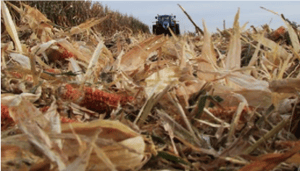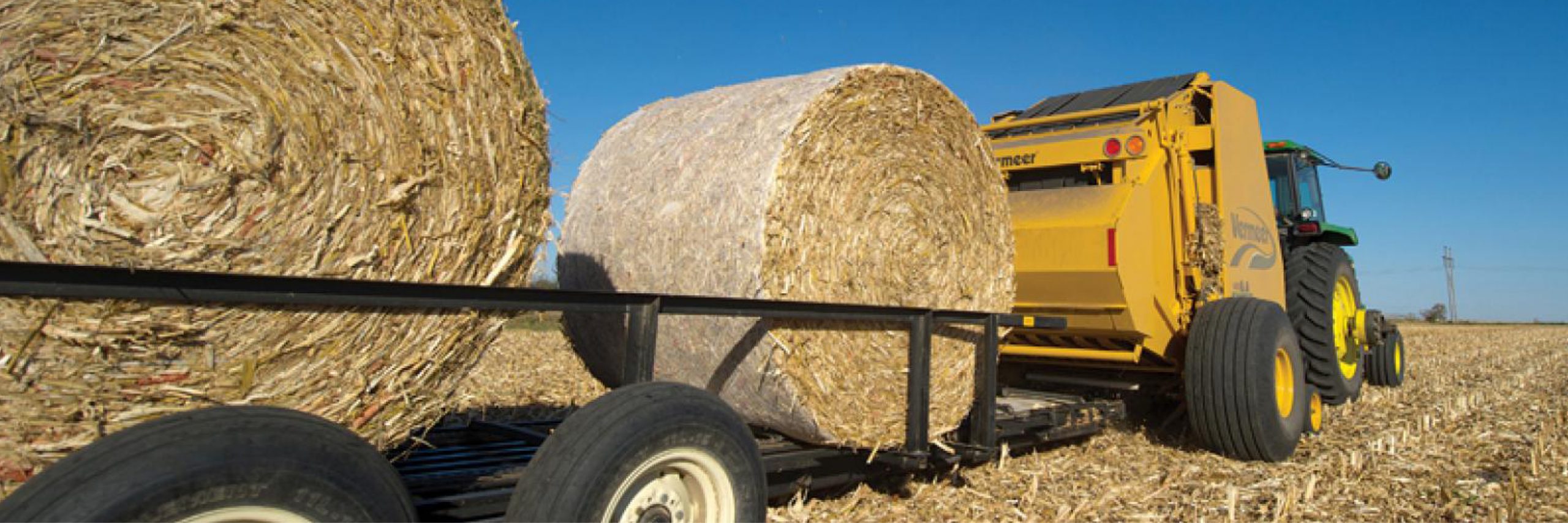Sustainably Harvesting Corn Stover
For many Summit Livestock producers, once the combines leave the corn fields, a second harvest occurs as corn stover is baled for various uses on the farm or for sale. The baled biomass is used for feed or for bedding. In some cases, it can be used in ethanol production facilities.
 However, any time you take something off a field, you are removing valuable nutrients that contribute to soil fertility and soil quality. And without cover, fields may be more at risk to wind and water erosion. Fields in dry areas may risk losing additional soil moisture if too much stover is removed.
However, any time you take something off a field, you are removing valuable nutrients that contribute to soil fertility and soil quality. And without cover, fields may be more at risk to wind and water erosion. Fields in dry areas may risk losing additional soil moisture if too much stover is removed.
Economic and environmental considerations must be carefully considered regarding just how much corn stover can be sustainably removed from a field including these tips outlined by the Iowa Corn Promotion Board:
Slope Erosion is amplified where slopes exceed 2%-3%. It is recommended that stover is not harvested from fields with slopes greater than that target.
Tillage In fields with heavy residue, tillage is often done to help manage the residue, so it is not a problem for next year’s crop to emerge in the spring. No-till fields may provide the greatest quantities of stover to harvest. If heavy tillage is done to reduce corn residue in a field, less stover should be harvested as it will be needed to protect against erosion. If stover is harvested, less tillage should be required as there will be less residue to manage.
Rotation Long-term corn|soybean rotations contribute less soil organic matter than continuous corn. Continuous corn fields typically provide ample stover. When continuous corn production is combined with reduced or no-till practices, stover harvest contributes to effective residue management practices.
Yields Grain yield is related to residue production. For every 40 bu/ac of corn produced (56 lbs at 15.5% moisture), 1 ton of residue (at 10% moisture) is produced. For example, a 240 bu/ac field will produce approximately 6 tons of residue while a 120 bu/ac field will produce approximately 3 tons of residue.
With higher grain and stover yields, more stover is available for harvest, leaving behind enough to control erosion and build organic matter. In a typical no-till or minimum till field, roughly 45% or two tons per acre of stover can be sustainably removed following each corn crop.
Cover Crops and Manure Fields that receive manure applications or that are in cover crops add organic matter to soils. More stover can be harvested sustainably because these additional practices help enhance and preserve soil organic matter (source and photo: Iowa Corn Promotion Board).


